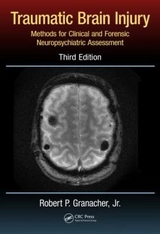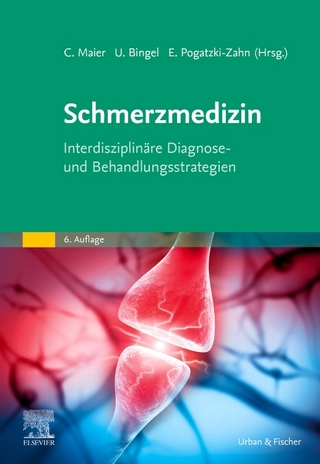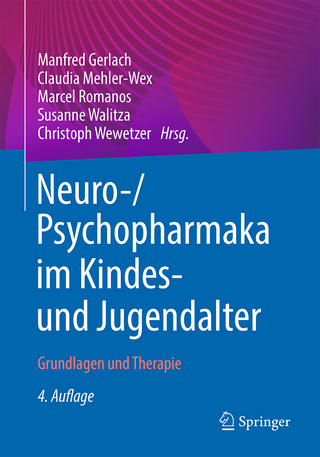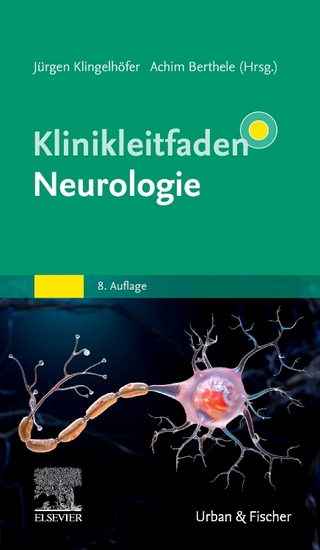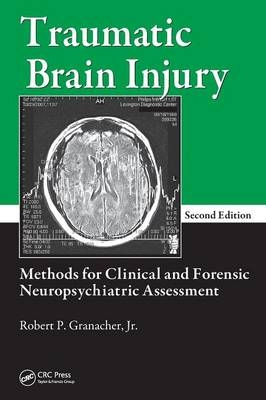
Traumatic Brain Injury
Crc Press Inc (Verlag)
978-0-8493-8138-6 (ISBN)
- Titel erscheint in neuer Auflage
- Artikel merken
Since the original publication of Traumatic Brain Injury: Methods for Clinical & Forensic Neuropsychiatric Assessment, enhanced clinical findings concerning traumatic brain injury have improved our ability to evaluate and treat individuals with TBI. Unfortunately, the dramatic rise in the occurrence of brain injuries over the same time period demands better proficiency in evaluation and treatment. In an effort to optimize forensic and medical examinations of the victims of traumatic brain injury, this volume provides additional research, practical guidelines, and the latest advances and applications in structural and functional imaging assessment techniques.
With case studies and images from functional MRI, PET scans, and MR spectroscopy, the second edition places more emphasis on mild traumatic brain injury, including expanded information on sports injuries in children and athletes. It discusses the neuroanatomical and neuroimaging bases of cognitive domains of the brain and includes findings on the epidemiology and pathophysiology of brain injury, as well as acquired psychopathology following injury. It also investigates the physical effects and psychiatric ramifications of blast over-pressure as seen in combat veterans and civilians in Kosovo, Lebanon, and Iraq. Additional chapters emphasize forensic evaluation with discussions on the detection of brain-injury malingering, determination of impairment, methods of neurobehavioral analysis, and the presentation of evidence at trial.
Providing practical guidelines for using state-of-the-art, brain-based assessment techniques, this volume establishes a neuropsychiatric schema for the evaluation of traumatic brain injury and provides tools for designing a treatment plan. The methods in this book can be used to evaluate and treat any neuropsychiatric disorder with the addition of appropriate laboratory studies and pathology specific treatment.
University of Kentucky, Lexington, USA
THE EPIDEMIOLOGY AND PATHOPHYSIOLOGY OF TRAUMATIC BRAIN INJURY
Epidemiology of Traumatic Brain Injury
Classification of Head Injury
General Classification of Head Injury
Blunt Head Trauma, Penetrating Head Trauma, Blast or Explosion, Overpressure Trauma, Sports Injuries, Head Injury in Infancy and Childhood
Neuropathology of Traumatic Brain Injury
Potential Neurodegeneration
Damage to the Neurofilamentous Cytoskeleton Alterations of Calcium Homeostasis, Apoptosis and Cellular Death, Acute Biochemical Markers
The Pathology of Head Injury
Skull Fracture, Focal Head Injury, Diffuse (Multifocal) Brain Damage
Secondary Injury after Head Trauma
Vascular Failure, Intracranial Hypertension, Brain Shift and Herniation
NEUROPSYCHIATRIC AND PSYCHIATRIC SYNDROMES FOLLOWING TRAUMATIC BRAIN INJURY
Neuropsychiatric Syndromes
Adult Cognitive Disorders, Adult Executive Disorders, Child Cognitive Disorders, Child Executive Disorders, Post-Concussion Syndrome, Frontal Lobe Syndromes, Posttraumatic Seizure Disorders, Posttraumatic Headaches, Normal-Pressure, Hydrocephalus, Posttraumatic Fatigue and Excessive Daytime Somnolence, Balance Disorders, Sexual Disorders
Psychiatric Syndromes
Depression, Mania, Anxiety Disorders, Posttraumatic Stress Disorder, Psychosis, Personality Changes, Aggression, References
GATHERING THE NEUROPSYCHIATRIC HISTORY FOLLOWING BRAIN TRAUMA
Taking the Adult Brain Injury History
Post-trauma Symptoms and Treatment
Taking the Child Brain Injury History
Post-trauma Symptoms and Treatment,
Review of the Medical Records
Emergency Room Records, The Hospital Record, Cognitive Rehabilitation Records, Occupational and Physical Therapy Records, Speech and Language Pathology Records
Taking the Collateral History
THE NEUROPSYCHIATRIC MENTAL STATUS AND NEUROLOGICAL EXAMINATIONS FOLLOWING TRAUMATIC BRAIN INJURY
The Adult Mental Examination
The Adult Neurological Examination
Involuntary Movements, Sensory Examination, Reflexes, Coordination and Gait
Motor Vehicle Driving after Traumatic Brain Injury
The Child Mental Examination
Child Neurological Examination
THE USE OF STRUCTURAL AND FUNCTIONAL IMAGING IN THE NEUROPSYCHIATRIC ASSESSMENT OF TRAUMATIC BRAIN INJURY
Structural Imaging of Brain Trauma
Computed Tomography, Magnetic Resonance Imaging, High-Field Magnetic Resonance Imaging, Functional Imaging of Brain Trauma, Positron Emission Tomography, Functional Magnetic Resonance Imaging, Magnetic Resonance Spectroscopy, Electroencephalography, Special Problems in Pediatrics
General Pediatric Perspectives
Nonaccidental Trauma (Child Abuse)
Standardized Neurocognitive Assessment of Traumatic Brain Injury
Basic Statistics of Psychological Testing
Adult Neurocognitive Assessment
Child Neurocognitive Assessment
Measuring Cognitive Injury in the Very Young Child
BEHAVIORAL ASSESSMENT FOLLOWING TRAUMATIC BRAIN INJURY
The Adult
Affect and Mood Changes following TBI, Measuring Mood Changes, Aggression, Measuring Aggression, Effects of Brain Injury upon Sexual Behavior, Psychosocial Functioning
Traumatic Brain Injury and Impact upon Emotional Intelligence, Measuring Aspects of Emotional Intelligence following Brain Injury
The Child
Affect and Mood Changes after TBI, Measuring Mood Changes in Children, Aggression, Psychosocial Functioning in Brain-Injured Children
Dynamics of Traumatic Brain Injury within the Family or with Significant Others
The Adult, the Child, Measurement of Patient Neurobehavioral Function within the Family System
NEUROBEHAVIORAL ANALYSIS AND TREATMENT PLANNING FOLLOWING TRAUMATIC BRAIN INJURY
Analysis of the Data
The Injury Records, the Neuropsychiatric Examination Database
Establishing Neuropsychiatric Deficits
Neuropsychiatric Treatment Planning
Pharmacologic Management of Cognitive Disorders following, Psychotherapy following Traumatic Brain Injury, Family Interventions and Therapy, Cognitive Rehabilitation
Clinical Neurobehavioral Analysis of Case Data
Case Study: Mild Traumatic Brain Injury as a Result of Motor Vehicle Accident
Case Study: Moderate Brain Injury due to Slip-and-Fall
Case Study: Severe Brain Injury as a Result of a Tractor-Trailer Truck Accident
Case Study: Child Traumatic Brain Injury
FORENSIC EXAMINATIONS: DISTINCTIONS FROM EXAMINATIONS FOR TREATMENT AND THE DETECTION OF DECEPTION
Critical Differences between Treatment Examinations and Forensic Assessment of Traumatic Brain Injury
Are You Examining a Patient or an Examinee?
Ethics and Boundary Issues of the Forensic Neuropsychiatric Examination
Legal Rules Governing the Admissibility of Scientific
Evidence at Court, Frye V. United States: General Acceptance Standards, Daubert V. Merrill Dow Pharmaceuticals, Inc, General Electric Company V. Joiner, Kumho Tire Company V. Carmichael
Detection of Deception during Neuropsychiatric Examination of
Traumatic Brain Injury, Malingering, Detection of Cognitive Malingering, Detection of Psychological Malingering, Detection of Somatic (Physical) Malingering
CAUSATION, DAMAGES, OUTCOME, AND IMPAIRMENT DETERMINATION FOLLOWING TRAUMATIC BRAIN INJURY
Causation
Damages
Outcomes following Traumatic Brain Injury
Outcomes for Adults following Moderate-Severe Traumatic Brain Injury, Outcomes in Children following Traumatic Brain Injury
Evaluating Legal Competence following Traumatic
Brain Injury, Adult Competence, Child Competence
Determining Impairment following Traumatic Brain Injury
Disability Determination following Traumatic Brain Injury
Forensic Medical History
FORENSIC NEUROBEHAVIORAL ANALYSIS OF TRAUMATIC BRAIN INJURY DATA
Introduction
Analysis of the Forensic Data Following Traumatic Brain Injury
Case Study: Severe Central Facial Fractures Resulting in Traumatic Brain Injury
Case Study: Multiple Brain Traumas as a Result of Assault and Battery
Case Study: Faking a Brain Injury in Order to Obtain Workers’ Compensation Benefits
| Erscheint lt. Verlag | 20.12.2007 |
|---|---|
| Zusatzinfo | 135 Tables, black and white; 32 Illustrations, black and white |
| Verlagsort | Bosa Roca |
| Sprache | englisch |
| Maße | 178 x 254 mm |
| Gewicht | 1164 g |
| Themenwelt | Medizin / Pharmazie ► Medizinische Fachgebiete ► Neurologie |
| ISBN-10 | 0-8493-8138-X / 084938138X |
| ISBN-13 | 978-0-8493-8138-6 / 9780849381386 |
| Zustand | Neuware |
| Haben Sie eine Frage zum Produkt? |
aus dem Bereich
